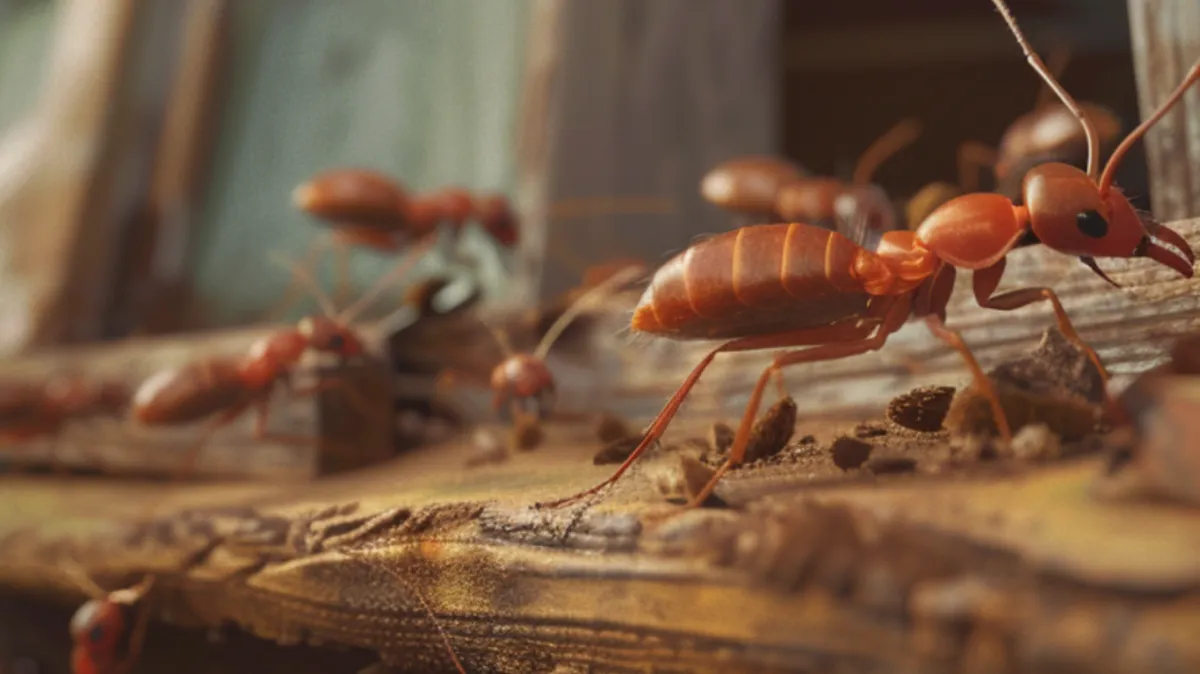
The Cobble Hill Pest Journal
The Cobble Hill Pest Control Journal

The Scary Truth About Neglected Pest Infestations
Understanding the Risks
Pest infestations are more than just a nuisance; they can be downright dangerous. Rodents like mice and rats, as well as insects such as cockroaches and ants, can carry diseases that are harmful to humans and pets. These pests can contaminate food sources, kitchen surfaces, and other areas of your home with pathogens that lead to illness.
Structural damage is another major concern, especially with pests like termites and carpenter ants, which can undermine the integrity of your home from within the walls. Similarly, rodents are known for chewing through wires, which can pose fire hazards and lead to expensive repairs.
Preventive Measures to Protect Your Home
Fall is a critical time for pest proofing, as pests look for cozy places to survive the colder months. Here are some effective strategies to prevent an infestation:
- Seal Entry Points: Inspect your home for any cracks, holes, or openings that pests could use to enter. Seal these gaps with appropriate materials like caulk, steel wool, or plaster. Pay special attention to areas where utilities and pipes enter the home.
- Manage Moisture: Many pests are attracted to moisture, so it's important to fix leaky pipes and clogged drains. Ensure good drainage at the foundation, and use dehumidifiers in damp basements, crawl spaces, and attics.
- Trim Vegetation: Keep branches and shrubbery well-trimmed and away from the house. Overgrown vegetation can offer pests shelter and a pathway into your home.
- Store Food Securely: Store food in airtight containers and dispose of garbage regularly in sealed receptacles. This limits food sources that can attract pests.
- Regular Cleaning: Frequent vacuuming and dusting can help eliminate pests’ food sources and disturb their habitat.
Common Fall Pests and Their Signs
As the crispness of fall sets in, various pests begin to seek the warmth and shelter of indoor environments, making homes susceptible to invasions. Understanding the common pests of the season and recognizing the early signs of their presence can help you take preventive measures to keep them at bay. Here’s a guide to the most active pests during fall and how to spot them:
1. Spiders
Signs: Increased sightings of spiders are common in the fall as they enter homes to escape the cooling weather. Look for webs in the corners of rooms, in window frames, and in less trafficked areas of your home. Spiders often venture indoors during this season, so spotting them in basements, attics, and garages is also common.
2. Mice
Signs: Mice seek warmth and food sources as temperatures drop. Indicators of a mouse infestation include droppings (small, dark pellets), sounds of scurrying in the walls or ceilings at night, gnaw marks on furniture or food packaging, and a distinctive ammonia-like odor (from their urine).
3. Stink Bugs
Signs: Known for their shield-shaped bodies and the odor they release when threatened or crushed, stink bugs often invade homes in the fall. You might notice these pests clustering around sources of light or on the sunny exteriors of buildings. Keep an eye out for them near windows, door frames, or other entry points.
4. Ladybugs
Signs: While beneficial in gardens, ladybugs can swarm homes in the fall to overwinter. They are typically found around windows and doors, particularly on bright, sunny sides of houses where they gather in large numbers.
5. Silverfish
Signs: These pests thrive in dark, damp areas and can be found in basements, bathrooms, and kitchens. Look for silverfish in bookshelves, storage boxes, and pantries, as they feed on paper, glue, and food debris. Their presence is often indicated by small holes in wallpaper or irregular-shaped marks on paper materials.
Preparing Your Garden for Fall to Discourage Pests
Here are some essential tips to keep your outdoor areas less inviting to pests:
1. Clean Up Debris
Fallen leaves, dead branches, and other garden debris can provide ideal shelters for pests like rodents, snails, and insects. Regularly cleaning up your garden will minimize the potential hiding spots for pests. Ensure that compost piles are well managed and positioned away from your home to avoid attracting pests closer to your living areas.
2. Trim Vegetation
Overgrown bushes and tree limbs that touch your home’s exterior can provide easy access for pests to enter. Keep all vegetation trimmed back from the structure of your house. Ensure that grass is mowed regularly and that landscape plants are kept pruned and healthy to reduce their appeal to pests.
3. Manage Moisture
Many pests are attracted to moisture, so it’s crucial to eliminate any standing water in your yard. Check for clogged gutters, leaking spigots, and poor drainage areas that could accumulate water. Use drainage solutions to keep water away from your foundation, as excess moisture can attract termites, ants, and other pests.
4. Mulch Smartly
While mulch can be beneficial for your soil, it can also attract insects if too close to your home’s foundation. Keep mulch at least a few inches away from the siding to avoid creating a moist habitat for pests right next to your house. Consider using less pest-attractive alternatives like cedar mulch, which has natural oils that can deter some insects.
5. Plant Pest-Repelling Plants
Some plants are known for their natural ability to repel pests. Consider planting these around the perimeter of your home and garden. Plants like lavender, marigolds, and chrysanthemums are not only beautiful but can also help keep away mosquitoes, aphids, and other pests.
6. Use Row Covers for Vegetable Gardens
For those who maintain a vegetable garden, consider using row covers as the weather cools. These covers not only extend the growing season but also act as a barrier against insects, birds, and other pests that might be attracted to your produce.
7. Regular Inspection and Maintenance
Finally, a regular walk-through to inspect for signs of pest activity or structural vulnerabilities can be invaluable. Look for new gaps or cracks in the exterior of your home where pests might enter, and seal them promptly.
The Role of Professional Pest Control
While DIY measures are important, professional pest control services offer more comprehensive solutions. Experts like those at Pest in the City can provide a thorough assessment of your property to identify potential risk areas you might overlook. They offer tailored treatments to address any current infestations and help prevent future ones with:
- Barrier Treatments: Professionals can apply safe and effective treatments around the perimeter of your home to deter pests.
- Bait and Trap Systems: These are strategically placed to catch and remove pests before they enter your home.
- Regular Inspections: Scheduling regular inspections can catch signs of infestation early, making treatments more effective and less invasive.
Visit our website or contact us directly to learn how we can help keep your property pest-free this fall and beyond.

Schedule a Pest Inspection
Ready to schedule a pest inspection? Contact us today.

